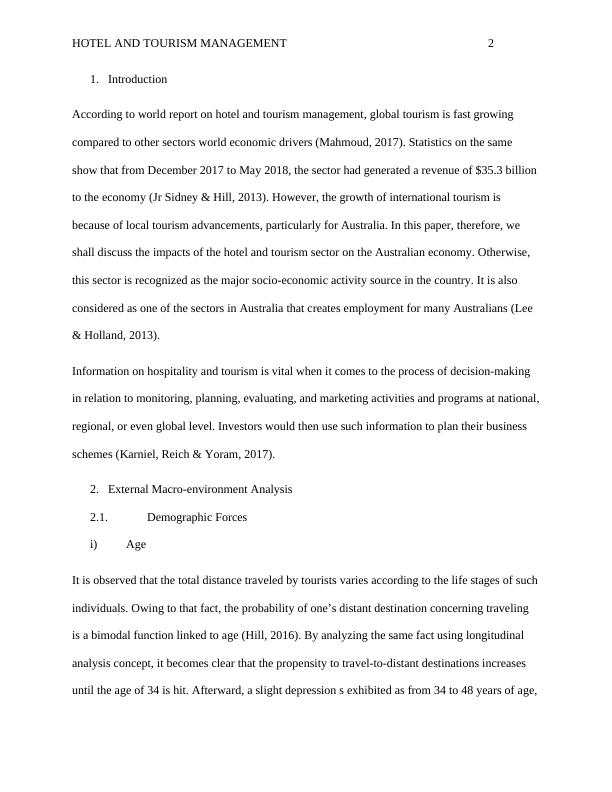Impacts of Hotel and Tourism Sector on Australian Economy
Analyzing the impact of the Australian dollar value and terrorism on the marketing environment using the PESTEL analysis model. Includes an introduction, body, conclusion, and references.
9 Pages2463 Words335 Views
Added on 2023-06-03
About This Document
This paper discusses the impacts of the hotel and tourism sector on the Australian economy. It covers external macro-environment analysis, including demographic, economic, competition, culture and societal, legal and political, and technological forces.
Impacts of Hotel and Tourism Sector on Australian Economy
Analyzing the impact of the Australian dollar value and terrorism on the marketing environment using the PESTEL analysis model. Includes an introduction, body, conclusion, and references.
Added on 2023-06-03
ShareRelated Documents
End of preview
Want to access all the pages? Upload your documents or become a member.
Tourism Sales: Role-plays depicting sales situations in the travel and tourism industry
|7
|1723
|131
Innovation in Tourism and Hospitality Industries
|9
|1643
|218
Issues in Hospitality and Tourism: Sri Lanka
|11
|2178
|98
Impact of Sustainable Tourism on Development of Spain and Barcelona
|16
|4808
|226
Impact of Tourism in South Korea
|5
|2658
|500
Impact of Covid-19 on Tourism and Business in UK
|6
|2168
|312



